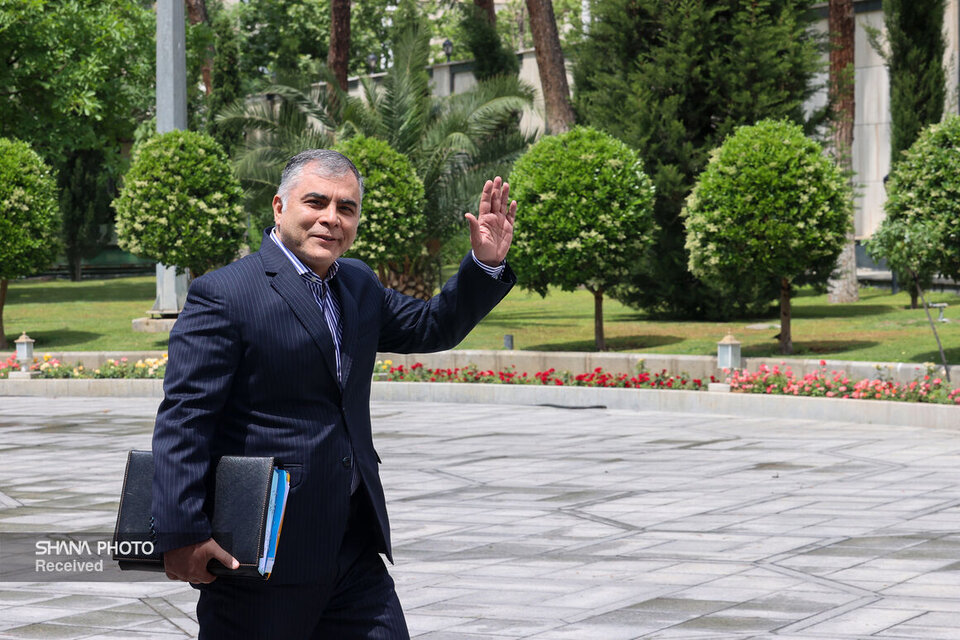On Aug. 21, 2024, Paknejad secured 222 votes of confidence from parliament, becoming the country’s 12th oil minister. Though little-known in political circles, he was a familiar name in the oil industry, with 27 years of service in key positions and extensive knowledge of both macro and technical issues that set him apart from other candidates.
Immediately after his appointment, Paknejad selected trusted experts as deputies and set realistic, actionable goals. His seven-point agenda—boosting production, developing shared fields, completing unfinished projects, improving efficiency, addressing workforce conditions, expanding international cooperation, and focusing on the environment—earned broad support from lawmakers and energy specialists.
He inherited the ministry at a time when energy imbalance was rapidly becoming a national crisis. Prioritizing higher oil and gas production, he sought to confront long-standing shortfalls caused by years of neglect in energy efficiency.
One year on, Paknejad’s record reflects both promises and achievements, amid wars, sanctions, and unforeseen disruptions. His ministry’s resilience has become a defining feature of the year.
Reassurance amid regional tensions
In October 2024, days after Iran’s “True Promise 2” operation that saw the Revolutionary Guard fire 200 missiles at Israeli military bases, Paknejad traveled to Assaluyeh and Kharg. With speculation of retaliatory strikes on Iranian oil facilities, his visit offered reassurance to workers and drew international media coverage. The Times of Israel reported: “Paknejad declared in Iran’s energy capital that he is not worried about the enemy’s threats.”
Surviving a harsh winter
Iran faced a severe energy crunch in late 2024, with gas making up over 90% of the energy mix, depleted fuel stocks, and an unusually early and prolonged cold season. Through coordinated action—optimizing maintenance schedules, boosting output from wells, and drilling new ones—the ministry set records in raw gas production, averaging 1.105 billion cubic meters per day in winter 2024–25. Campaigns like “Two Degrees Less” and public cooperation on gas conservation also played a key role.
Despite criticism linking planned blackouts to the ministry, transparent communication prevented misinformation. The winter passed without major gas outages, turning a potential crisis into a success story.
Oil output, exports rise
Paknejad’s priority of increasing crude output, especially in shared fields, showed results within 100 days, with daily production up by 60,000 barrels. A \$3 billion loan agreement paved the way for a 400,000-barrel expansion target. By mid-2025, average crude production had risen more than 120,000 barrels per day compared to the start of his term, while gasoline and diesel output each grew by about 5 million liters per day.
Diplomacy, global platforms
Just weeks after Israeli airstrikes into Iranian airspace, Tehran hosted the 26th Gas Exporting Countries Forum ministerial meeting. As chair, Paknejad condemned Israeli attacks on Gaza and Lebanon, warning of threats to global energy security. The in-person meeting, despite geopolitical tensions, highlighted Iran’s stability and drew international attention.
Listening tours in oil-rich but impoverished regions
In early 2025, Paknejad visited Khuzestan with President Masoud Pezeshkian, stopping in Aghajari to hear residents’ grievances firsthand. Rejecting formalities, he promised greater attention to neglected communities affected by oil operations. He later confirmed that 130 trillion rials had been allocated to social responsibility projects in Khuzestan, with half already spent.
Standing up to US sanctions
The return of Donald Trump to the White House in February 2025 revived “maximum pressure” sanctions on Iran’s oil industry. Paknejad responded by announcing record oil exports in January 2025, breaking a decade-long high. At the Feb. 11 anniversary rally, he declared: “The U.S. president talks of reducing Iran’s oil exports to zero, but this illusion will never come true.”
US sanctions soon targeted senior oil officials, including Paknejad himself, but reports of fresh export records followed, underscoring the resilience of Iran’s oil trade.
Investment, international engagement
After Iran’s Supreme Leader declared 2025 the “Year of Investment for Production,” the Oil Ministry launched a major upstream investment forum, offering \$130 billion in projects to foreign and domestic investors. A new non-governmental oil industry guarantee fund was also unveiled. Shortly after, the 29th Iran Oil Show hosted 2,200 companies, where Paknejad announced faster contract cycles—reduced from several years to six months.
Crisis management during a 12-day conflict
In June 2025, Iran endured a 12-day conflict aimed at disrupting daily life. Oil facilities came under threat, but production and fuel supply continued uninterrupted. Distribution records were set at gas stations, cybersecurity defenses held firm, and damaged facilities were swiftly repaired. Foreign and domestic observers praised the ministry’s crisis management.
Paknejad personally visited frontline sites, including attacked fuel depots, to oversee operations. Remarkably, foreign outlets also reported record oil exports during the same period.
Beyond the first year
Additional milestones in Paknejad’s first year included Iran’s OPEC presidency, expanded ties with neighboring states, \$17 billion contracts for South Pars gas pressure-boosting, revival of the Petroleum University of Technology, and new welfare measures for oil sector employees.
It was a year many considered impossible to navigate—but through persistence and strategy, Paknejad’s ministry left its mark on Iran’s oil industry.


Your Comment